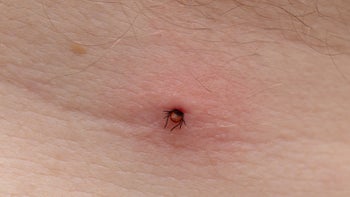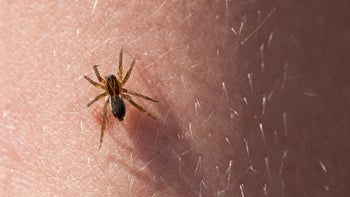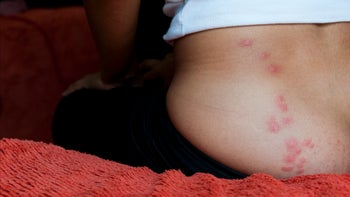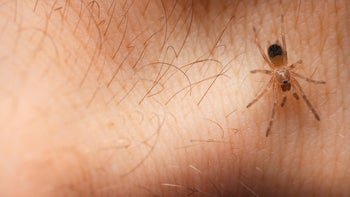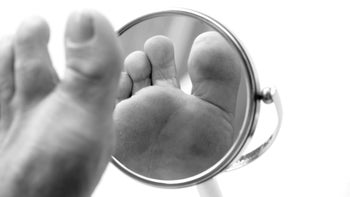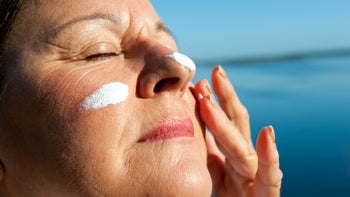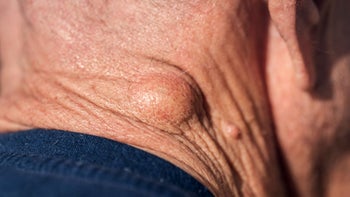
Hand Fungus vs. Eczema: How Can You Tell the Difference? Images and Symptoms
Key takeaways:
There are many different causes for that itchy rash on your hand. Two of the most common are eczema and fungal infections.
Both conditions can look similar, but a fungal infection is more likely to involve your hair and nails. It also doesn’t come and go like eczema.
Knowing the difference between hand fungus and eczema is important because the treatments are different, and using the wrong medication could make either condition worse.

If you have a rash on your hand, you may be wondering if it’s eczema or a fungal infection like ringworm. At first glance, these two conditions can seem pretty similar. They can both show up on your hand as an itchy rash. But that’s where the similarities end.
Knowing whether you have eczema or a fungal infection on your hands is important because they have different causes and treatments.
What is hand fungus?
Fungal infections on the skin are caused by organisms called fungi (that’s the plural of fungus). There are a few different types of fungus that can cause a skin infection, and they’re more common than you may realize. They’re often called ringworm because they can form the shape of a ring on your skin. (Rest assured, they have nothing to do with worms.)
What makes things even more confusing is that fungal infections can also have different names based on what part of the skin is infected, such as:
Athlete’s foot (tinea pedis)
Jock itch (tinea cruris)
Hand ringworm (tinea manuum)
Scalp ringworm (tinea capitis)
Onychomycosis (nail infection)
No matter where you have it, fungal infections of the skin are contagious and can easily spread to other people and other parts of your body. In order to treat them successfully, special medications are needed (more on these below).
Not sure if it’s eczema or psoriasis? See pictures that can help to tell the difference between these two common conditions.
Natural treatments for eczema: From apple cider vinegar to probiotics, these natural treatments worked for one woman with eczema.
Nail fungus is common. Learn what it looks like in pictures — and what you can do about it.
What is eczema?
There are a few different types of eczema, but all types can cause an itchy rash on the skin. The most common type of eczema is atopic dermatitis. It’s caused by a combination of an overactive immune system and a disrupted skin barrier. This means your skin is more likely to be dry and get inflamed and irritated.
People with atopic dermatitis usually start having symptoms when they’re young, but it can start at any age. It tends to run in families, and many people with eczema also have hay fever and asthma.
Other types of eczema are common on the hand, too, including:
Dyshidrotic eczema: This type of eczema leads to red, brown, or violet itchy patches and fluid-filled blisters. For some people it only lasts for a few weeks, for others it can be a lifelong condition. We’re not exactly sure what causes it, but for some people it’s a reaction to personal care products, stress, or temperature changes.
Allergic contact dermatitis: It produces a very itchy rash that can be red, brown, or violet. It happens when you come into contact with something you’re allergic to, like latex, fragrance, or detergents.
Read more like this
Explore these related articles, suggested for readers like you.
No matter what type of eczema you have, it’s not an infection and it’s never contagious.
Pictures of hand fungus (ringworm) and eczema
Even though they’re completely different conditions, it can sometimes be hard to tell eczema and fungal infections apart. This is because both rashes:
Are pretty common
Are similar in appearance
Share similar symptoms
Commonly affect hands (although they can appear anywhere on your body)
Here are some pictures of hand ringworm and eczema to help you see the difference between these two conditions. In the next section, we’ll go into more detail about their different signs and symptoms to watch for.
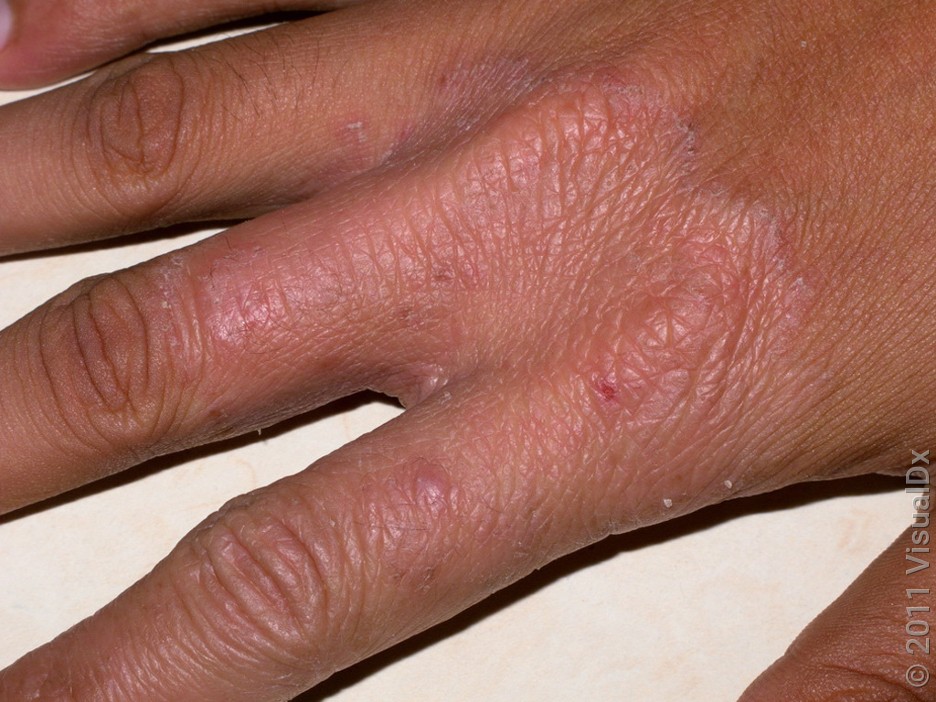
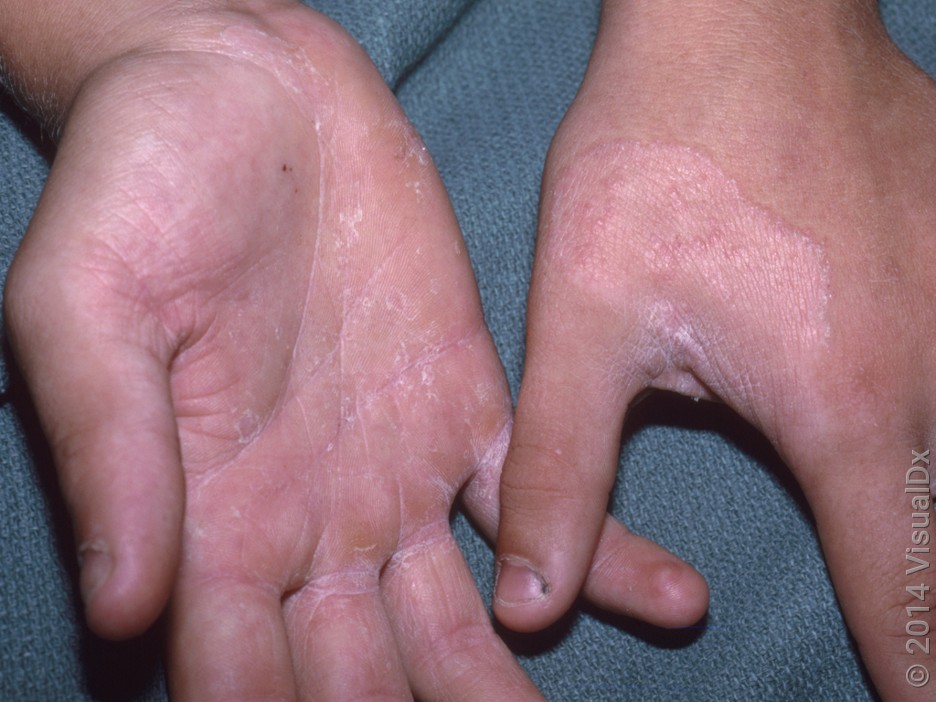

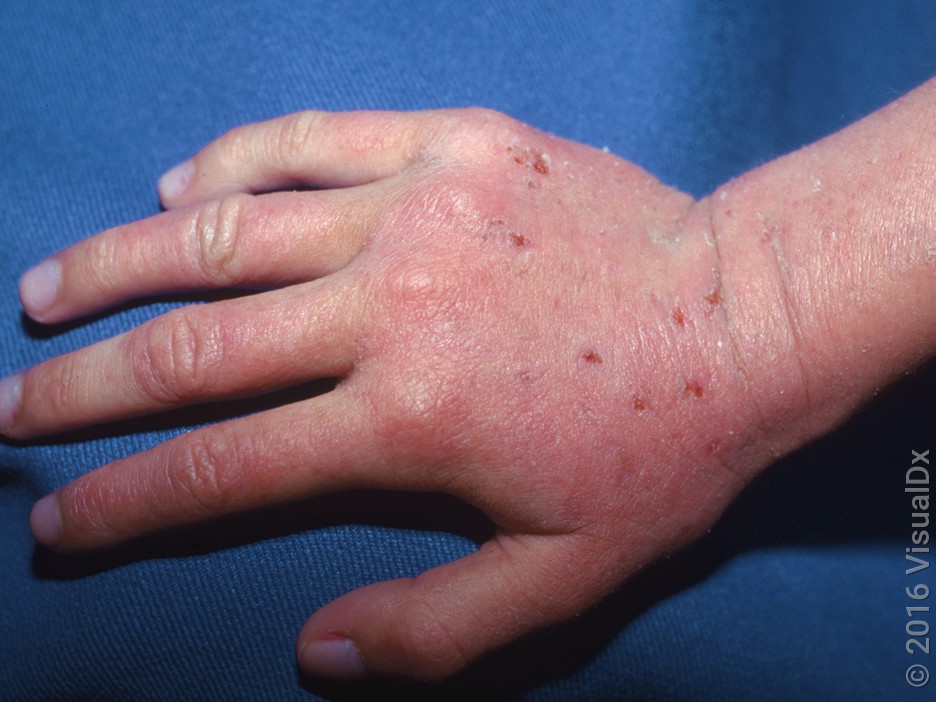
Signs and symptoms of hand fungus and eczema
Being able to tell hand fungus and eczema apart is important for two main reasons: They have different treatments, and one of them is contagious.
Here are some signs to look for. But, keep in mind that sometimes you’ll have to see your dermatologist or healthcare professional in order to get the right diagnosis.
|
Eczema |
Fungal infection |
|---|---|---|
Types | Atopic dermatitis, allergic contact dermatitis, dyshidrotic eczema | Ringworm, athlete’s foot, jock itch |
Location | It can be anywhere, often in several areas. Common locations are inside elbow bend, behind knees, hands, wrists, and ankles. It doesn’t usually affect the nails. | It can be anywhere or may just be in one area. Common locations include feet, groin, nails, and scalp. |
Color | In lighter skin, patches are pink or red. In darker skin, patches are gray, brown, or violet. | Patches can appear dry, and in lighter skin, they look pink or red. In darker skin, they can be gray, brown, or violet. |
Shape | Eczema usually doesn’t have a specific shape, and the borders may not be well defined. | It often forms a ring shape and may have a raised or scaly edge. Patches can grow and spread to other parts of the skin. |
Itch | It usually itches a lot. If it’s scratched a lot, it can hurt. | It usually itches but not always. |
Other features | The rash can come and go, and there may be dry skin in other areas. The skin can become thickened with a lot of itching. | The rash doesn’t come and go. The rash may have black dots (from broken hair follicles). |
How to treat your hand rash
It’s important to tell the difference between eczema and a fungal infection on the hands because they have different treatments. If you end up using the wrong treatment, the rash won’t get better and it could actually get worse.
Treatments for a skin fungal infection
The treatment for fungal infections of the skin (like ringworm) is antifungal medications. These treatments are available over the counter and in prescription strengths. They come in different forms, such as ointments, creams, and pills. The type of medication you use and for how long depend on the severity and location of the fungal infection.
Most fungal infections, like ringworm and athlete’s foot, are pretty mild and can be treated with over-the-counter (OTC) creams. Popular options include:
Clotrimazole (Lotrimin AF)
Miconazole
Terbinafine (Lamisil AT)
Tolnaftate (Tinactin)
Butenafine (Lotrimin)
You may need prescription-strength treatment if:
OTC treatments don’t work.
The infection is widespread.
The infection involves the scalp or nails.
Treatments for eczema
The best way to treat eczema is to understand what’s causing it. So, for example, if you’re having an allergic reaction to a cream, then avoiding the cream will resolve the eczema.
For the most common type of eczema, these OTC and prescription creams are usually enough to control mild flares:
Moisturizers and emollients, like Vaseline
Topical steroids, like triamcinolone
Calcineurin inhibitors, like tacrolimus
PDE4 inhibitors, like Eucrisa
For more severe eczema, systemic treatment that works throughout the body may be needed. This can include pills or injections, such as:
Steroid pills, like prednisone
Janus kinase (JAK) inhibitors, like Rinvoq
Immunosuppressants, like methotrexate
Immune modulators, like Dupixent
When should you see a dermatologist?
In most situations, fungal infections and eczema can be treated with OTC products.
But here are some situations when it’s a good idea to see your dermatologist or other healthcare professional:
The rash isn’t getting better after treating it for a couple of weeks.
The rash is causing hair loss.
The itching is so severe that it interferes with work or sleep.
The bottom line
If you find yourself with a rash on your hand, don’t panic. It’s most likely you have either eczema or a fungal infection on your hands. And with a few simple clues, you may be able to tell the difference. A fungal infection spreads easily, tends to form a ring-shaped rash, and can involve your nails or scalp. Eczema isn’t contagious, but it often runs in families. It’s usually intensely itchy, doesn’t affect nails, and can come and go.
You can treat both conditions with OTC medications — but you need to make sure you’re using the right treatment for the right condition, or you could make things worse. If you’re not sure, your healthcare professional can help.
Why trust our experts?


Images used with permission from VisualDx (www.visualdx.com).
References
American Academy of Dermatology Association. (n.d.). Ringworm: Diagnosis and treatment.
Ludmann, P. (2020). Eczema types: Dyshidrotic eczema overview. American Academy of Dermatology Association.






